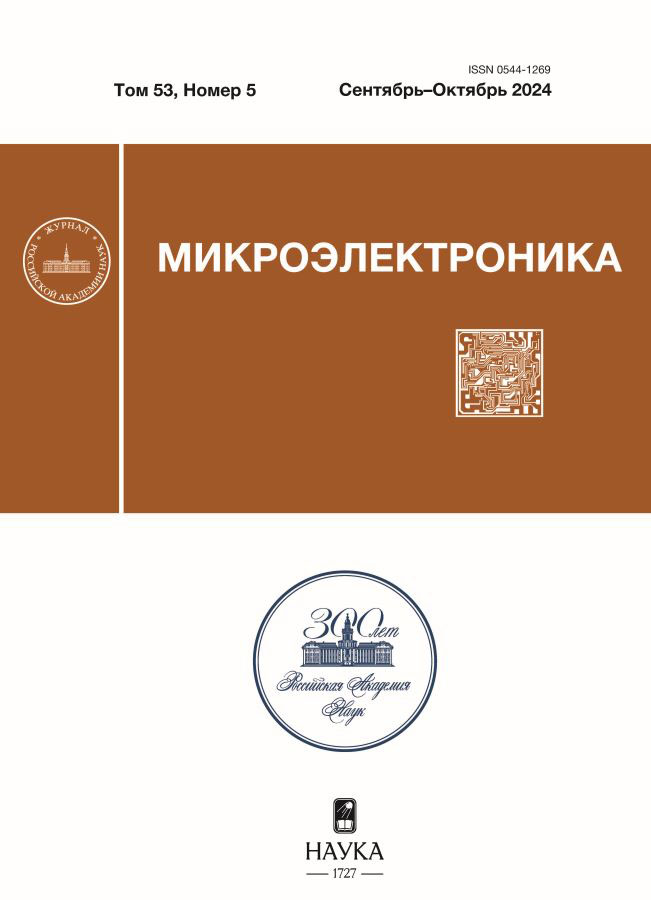Parameters matching of the thermoelectric system parameters for cooling heat-loaded electronics elements
- Autores: Vasil’ev Е.N.1
-
Afiliações:
- Institute of Computational Modelling, Siberian Branch, Russian Academy of Sciences
- Edição: Volume 53, Nº 5 (2024)
- Páginas: 407-412
- Seção: MODELING
- URL: https://gynecology.orscience.ru/0544-1269/article/view/681356
- DOI: https://doi.org/10.31857/S0544126924050068
- ID: 681356
Citar
Texto integral
Resumo
A thermoelectric cooling and thermal control system for electronic devices is considered. Based on a mathematical model using the operating characteristics of a serial thermoelectric module as initial data, calculations of the energy characteristics of a thermoelectric cooling system were carried out, taking into account its thermal resistances. The calculation results are presented in the form of diagrams, which allow for a coordinated selection of the system’s thermal resistances, ensuring the specified values of the cooling capacity and temperature difference.
Texto integral
Sobre autores
Е. Vasil’ev
Institute of Computational Modelling, Siberian Branch, Russian Academy of Sciences
Autor responsável pela correspondência
Email: ven@icm.krasn.ru
Rússia, Krasnoyarsk
Bibliografia
- Martyushev S.G., Sheremet M.A. Two factors affecting the cooling rate of fuel elements in sealed units // Mikroelektronika. 2014. V. 43. No 5. P. 390–398. doi: 10.7868/S0544126914050056
- Boutina L., Bessaih R. Numerical simulation of mixed convection air-cooling of electronic components mounted in an inclined channel // Applied Thermal Engineering. 2011. V. 31. P. 2052–2062. https://doi.org/ 10.1016/j.applthermaleng.2011.03.021
- Glinskii I.A., Zenchenko N.V. Computer simulation of the heat distribution element for high-power microwave transistors // Russian Microelectronics. 2015. V. 44, No 4. P. 236–240. doi: 10.1134/S1063739715040058
- Zuev S.M., Prokhorov D.A., Maleev R.A., Debelov V.V., Lavrikov A.A. Application of Graphene in The Cooling System of a Personal Electronic Computer // Russian Microelectronics. 2021. V. 50. No 6. P. 404–411. https://doi.org/10.1134/S1063739721050097
- Chang Y.W., Chang C.C., Ke M.T., Chen S.L. Thermoelectric air-cooling module for Chang electronic devices // Applied Thermal Engineering. 2009. V. 29. № 13. P. 2731–2737. https://doi.org/10.1016/j.applthermaleng.2009.01.004
- Shtern M.Yu., Shtern Yu.I., Sherchenkov A.A. Thermoelectric systems for providing thermal modes of computer technology // Izvestija Vysshykh Uchebnykh Zavedenii. Elektronika. 2011. No 4. P. 30–38.
- Vasil’ev E.N. Thermoelectric cooling of heat-loaded electronics // Russian Microelectronics. 2020. V. 49. No 2. P. 123–131. https://doi.org/10.1134/S1063739720020092
- Zagorodnov A.P., Yakunin A.N. Precision thermostatting of a resonator on volume acoustic waves. Modeling and synthesis of a control system // Zhurnal Radioelektroniki. 2013. No 10. P. 1–14, http://jre.cplire.ru/iso/oct13/12/text.pdf
- Vasil’ev E.N. On the importance of thermal resistances of the cooling system when choosing a thermoelectric module // Technical Physics. 2023. V. 68. No 5. P. 574–579, https://doi.org/10.21883/tp.2023.05.56062.13-23
- Vasil’ev E.N. Calculation of the thermal resistance of a heat distributer in the cooling system of a heat-loaded element // Technical Physics. 2018. V. 63. No 4. P. 471–475. https://doi.org/10.21883/JTF.2018.04.45714.2312
- Vasil’ev E.N. Determination of thermoelectric cooling modes of heat-loaded electronics // Russian Microelectronics. 2020. V. 49. No 4. P. 278–284, https://doi.org/10.31857/S0544126920030072
- Vasil’ev E.N. Optimization of thermoelectric cooling regimes for heat-loaded elements taking into account the thermal resistance of the heat-spreading system // Technical Physics. 2017. V. 62. No 9. P. 1300–1306, https://doi.org/10.1134/S1063784217090286
- Vasil’ev E.N. Calculation and optimization of thermoelectric cooling modes of thermally loaded elements // Technical Physics. 2017. V. 62. No 1. P. 90–96. https://doi.org/10.21883/JTF.2017.01.44022.1725
- https://crystalltherm.com/upload/iblock/5af/1knj372x6ho3v82cwzufypmaktsqm4ph/TM_S_199_14_11_L2_SPEC.pdf. Accessed September 13, 2024.
- http://kryotherm.ru/ru/assembly-instructions.html. Accessed September 13, 2024.
- http://ecogenthermoelectric.com/ru/texnicheskaya-podderzhka.html. Accessed September 13, 2024.
- Vasil’ev E.N. The Effect of thermal resistances on the coefficient of performance of a thermoelectric cooling system // Technical Physics. 2021. V. 66. No 6. P. 815–819. https://doi.org/10.1134/S1063784221050248
Arquivos suplementares















